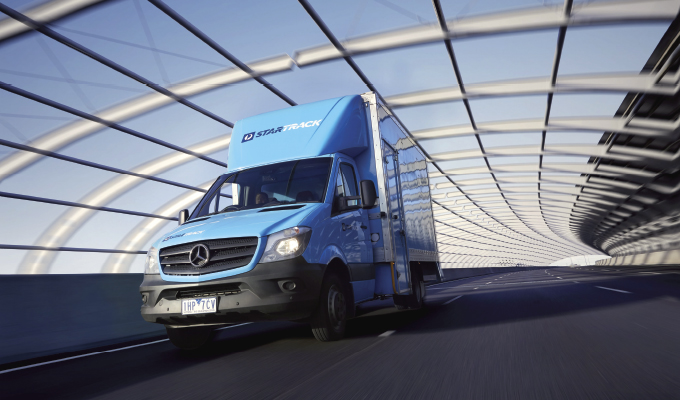Various designs, including ones which are aerodynamic, are greener by saving an average of 15 percent on fuel, while significantly decreasing CO2 emissions.
WHAT A DRAG
In the bustling world of medium-duty box trucks, the quest for greater operational efficiency is never-ending and can make the difference between success and failure. Critical to this is the focus on keeping fuel costs in check, and that is where vehicle aerodynamics comes into play.
The inherent physical properties of a box truck, namely its boxy shape, fight against fuel efficiency. In its native form, the vehicle is attempting to push the flat surface just above the cab, through the air.
“It’s like pushing a wall around,” says Steven Peterson, president, National Fleet Products. “There is almost nothing less aerodynamic than a flat surface, and the drag and turbulence it creates negatively impacts fuel efficiency, vehicle handling and wear and tear on a variety of components.”
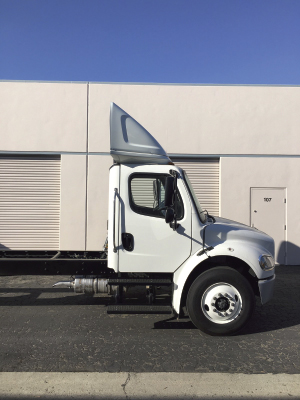
Long used on heavy-duty semi tractors, in more recent years the installation of OEM cab fairings on medium-duty, dry-freight box trucks have become an increasingly popular way to reduce drag and improve fuel efficiency. These fairings are becoming a more common sight on North American roadways, but they present their own set of problems.
The OEM fairings have metal frames that provide the devices with structural support. The traditional method of securing these metal frames to the trucks is by removing the interior headliner, drilling through the roof skins, and applying welded brackets for support. Unfortunately, the drilling and welding processes introduce a dilemma into the equation. While a step toward greater fuel efficiency, the process frequently results in unintended consequences, such as leaks and corrosion at the modification sites, diminishing the vehicles’ integrity, longevity, and cab environment.
“It’s ironic that the very solution meant to enhance performance and efficiency of a vehicle, inadvertently becomes a source of vulnerability, exposing the trucks to the elements and accelerating wear on many levels,” says Peterson. “Additionally, the rudimentary shapes of these fairings, which are designed to streamline the vehicle’s profile by directing air up and over the cab, fall far short of addressing the turbulence and aerodynamic drag that occur on the vehicle’s flanks.”
The aerodynamic oversight not only diminishes the potential gains in fuel efficiency but also raises questions about the true, overall cost of ownership associated with OEM fairings. Amid truck owners and operators grappling with this reality, a solution to the problem has now emerged.
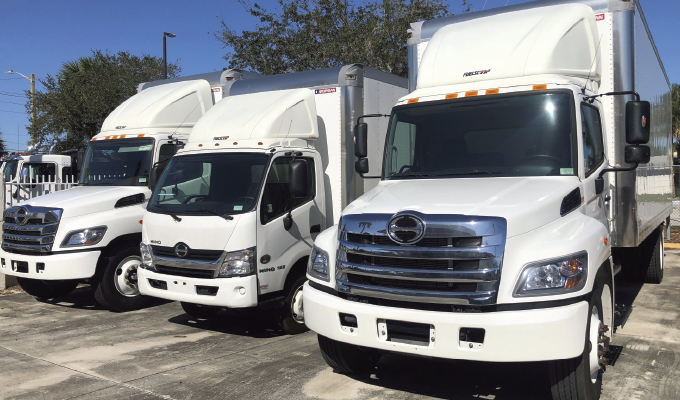
OVERHAUL DOWN UNDER
While the fairing issues continued to plague North American fleets, an Australian-based company had not only seen the problems but had engineered a system that addressed each weakness. Aerotrans Australia Pty Ltd., a manufacturer of transport equipment aerodynamics for truck cabs, truck bodies and semi-trailers, developed a product it trademarked as FuelScoop.
Originally designed to attach to the roof mount points that were being incorporated into the roof structures of predominantly Japanese truck brands, the company realized that many North American truck cabs had no mount point or under-roof reinforcement. The company saw an opportunity and embarked on a design with a base that would attach directly to any cab roof, precisely fitting its structural contours.
“FuelScoop pairs with its intended roof contours exactly and is bonded with structural-grade adhesives often used in trailer body construction and in other heavy-duty applications worldwide,” says Nigel Fletcher, managing director, Aerotrans. “The design equally distributes FuelScoop’s weight across the entire roof surface, and the combination of precision fit and high-strength adhesion eliminates the need for drilling and is considered 100 percent reliable.”
Tested in wind tunnels for aerodynamic efficiency at the Royal Melbourne Institute of Science, each FuelScoop is purpose-designed for the exact roof profile of the vehicle make and model to which it will be adhered. It requires no framework, drilling, welding, or roof augmentation of any kind. The structural adhesive bonds FuelScoop to the roof with no gaps and with total stability and confidence.
“FuelScoop’s aerodynamic profile is also far superior to other fairings and addresses the side turbulence and drag associated with other styles,” says Fletcher. “Its design includes a unique, signature configuration that not only directs airflow over the vehicle, but outward and around both sides. The resulting smooth, streamlined laminar airflow minimizes turbulence and drag, reducing driveline stress, while allowing the vehicle to move far more fuel efficiently.”
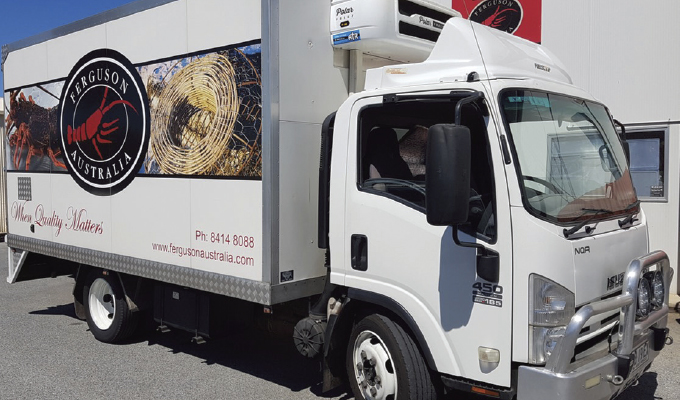
FUELING CHANGE
National Fleet Products is the exclusive American Distributer of Aerotrans Products, including FuelScoop. Based on years of collected data, the company is poised to help medium-duty dry-freight box truck fleets of all makes and models increase fuel savings, while reducing CO2 emissions.
Peterson said that FuelScoop can reduce a vehicle’s fuel consumption by over 15 percent, while improving vehicle handling and stability. Users can typically expect to recoup the entire cost of the product within 12 months or less.
Users agree with Peterson and have described firsthand experiences that not only emulate but exceed the fuel savings claim.
“For the month prior to installation of FuelScoop our test truck was driven 3,823 miles at average fuel consumption of 11.85 mpg,” says John Salamone, fleet asset manager for Huntersville, North Carolina-based American Tire Distributors. “For the month after installation of the FuelScoop the same test truck was driven 4,289 miles at average fuel consumption of 14.42 mpg. The 21.7 percent fuel savings are entirely attributed to the FuelScoop installation,”
Another user notes the impact on power and handling.
“The first two changes we noticed with the FuelScoop installed are that the truck now has so much more power, and the ride is significantly more stable,” says Randy Hagar, fleet manager for Flowood, Mississippi-based Rick’s Pro-Truck. “And then it reduced our average fuel consumption by 23 percent. We’re happy with the product and the results exceeded our expectations.”
Peterson described what average users can expect.
“A vehicle driving 40,000 miles at 10 miles per gallon will use approximately 4,000 gallons of fuel. That 4,000 gallons will cost approximately $3.70 per gallon of diesel, or $14,800 of fuel per year. With 15 percent savings from FuelScoop, users save $2,220 or 600 gallons of fuel per vehicle, so a fleet of 100 vehicles would save 60,000 gallons of fuel, netting it approximately $222,000 per year in savings. That’s $222,000 directly to a fleet’s bottom line,” says Peterson.
Peterson also notes that FuelScoop is a perfect addition to fleets now using or contemplating the use of electric vehicles. He says that FuelScoop will help maximize the range of EVs, thereby addressing one of their biggest challenges.
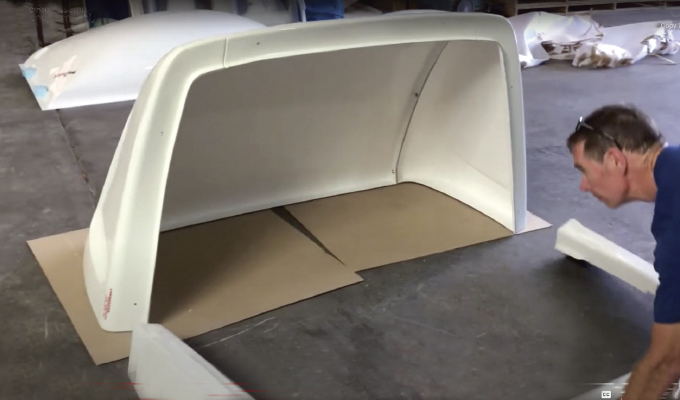
SAVING TONS
Peterson suggested that in an increasingly environmentally conscious and greening commercial vehicle landscape, FuelScoop can make a vehicle and a fleet greener overnight. He explained that every saved gallon of fuel prevents 20 pounds of CO2 from entering the atmosphere. Therefore, using the example noted above, the 600 gallons of fuel saved by just one vehicle, means a reduction of 12,000 pounds of CO2 and an overall reduction of 600 tons of CO2 for a fleet of 100.
Also, upfitters, dealers and those installing the fairing will save tons of shipping costs and time in the installation process as well. FuelScoop comes in a compact, palletized kit consisting of a two-piece base, one center panel and two side panels. Whether using factory roof mounts with Japanese model trucks, or an adhesive system for U.S. domestic model trucks, it takes just 30 minutes to install.
COLD FRONT
For those with refrigerated box trucks, National Fleet Products also offers its FridgeScoop, an aerodynamic fairing designed exclusively to accommodate vehicles with refrigeration units that overhang their cabs. The smaller-profile FridgeScoop offers the same advantages of FuelScoop, while still enabling easy access to refrigeration units.
It has no detrimental impact on refrigeration units and its convex arch provides improvements in fuel consumption, performance, and vehicle stability. While also deflecting insects away from refrigeration unit air intake manifolds.
HIGH PROFILE
In addition to their aerodynamic advantages, FuelScoop and FridgeScoop both provide a large and visible surface for brand graphics.
“These fairings immediately save fuel, improve vehicle stability, enhance vehicle handling, reduces driveline wear, significantly decreases CO2 emissions and require no drilling to install,” says Peterson. “And if that’s not enough, they look great doing it.”
For More Information
To learn more about National Fleet Products and its FuelScoop and FridgeScoop fairings, visit www.nationalfleetproducts.com/aerodynamics.


